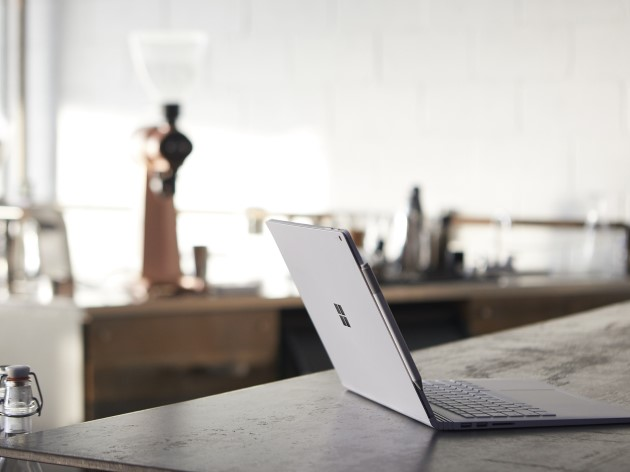“A computing device is described herein for capturing handwritten marks. It includes a main computing unit and a detachable writing input device joined by a connecting mechanism. The main computing unit includes a main display device, while the writing input device hosts a keyboard and a writing surface,” explains the patent. “A transfer control component transfers the ink data captured by the writing input device to the main computing unit upon a triggering event, such as the reconnection of the writing input device to the main computing unit. The computing device also includes a clustering component for classifying note pages received from the writing input device into one or more categories of notes.”
A Modular Surface Book 3?
Though the Surface Book 3 isn’t mentioned specifically, the device in the diagrams clearly has its hinge. It could just be a placeholder on Microsoft’s part, but an ink display would certainly make the most sense here. The Surface Book isn’t designed to be quite as portable as the Surface Pro line and has a thicker chassis. The body of the laptop also unclips from the display and is secured quite tightly. The diagrams suggest that in one variant users would be able to unclip the traditional keyboard and replace it with a fully functioning graphics tablet.
Unfortunately, there have been few rumors about the Surface Book 3 so far. Certainly, nothing that confirms something like this is in serious development. As always patents like this come with the disclaimer that such ideas rarely make it to market. Testing can reveal that users don’t find prototypes useful, or they can prove too expensive to produce. Either way, a Surface Book 3 with a modular bottom is something that could really differentiate it from the competition. It would also mean the detachable display makes more sense, as few people want to use a 15″ tablet. In other variations, though, the Surface Book simply has a handwriting display next to its touchpad. This would likely prove far less expensive for the user and mean they don’t have to swap out the bottom or flip the display onto its back for some quick note-taking. If you’re interested, you can check out the full patent on FPO. Thanks to WindowsUnited for discovering this filing.





